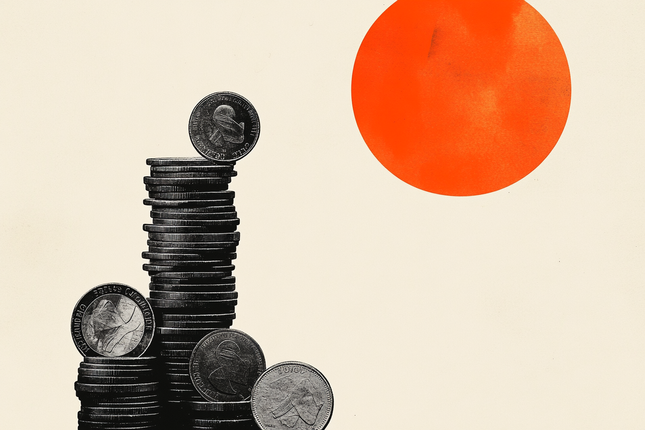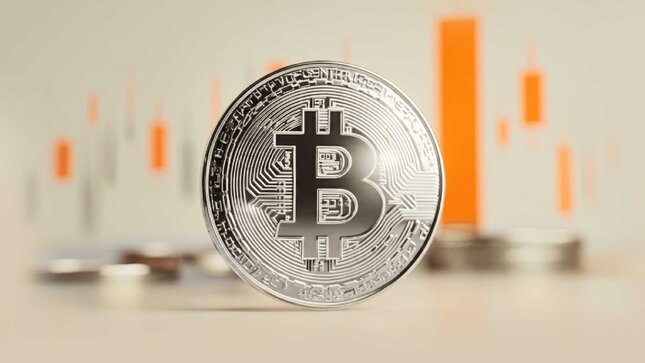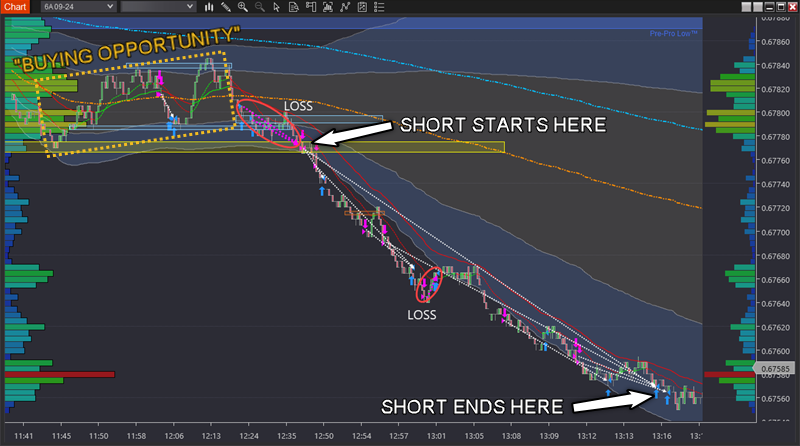You don't trade to make money—you trade to take it.
And in a minute, you'll see precisely what I mean by illustrating Tuesday's trading.
Before we dive in: Often labelled as 'dumb money,' your success hinges on identifying exactly who you're taking money from.
You see: Dr Brett Steenbarger works with some of the best elite traders in the US. When he speaks you listen...
"..success requires we know who we're making money from, and that requires that we understand how they think and trade--"
The fatal flaw the elite don’t make
You've seen me reference playbook trades—trades you know like the back of your hand.
But profitable trading is NOT spotting these scenarios and jumping in whenever they appear.
That's amateur hour, and it's not what those trades are for.
Instead: Let's say you've followed the evidence uncovering where the dumb money positions are.
And let's say you also have a solid read on what price they'll exit crystallising losses...
The reality is: Price can move in various ways from one price level to another. Correct?
But if the market moves in such a way that matches one of your playbook trades...
NOW you can trade because it's so familiar to you. You've made the same trade hundreds of times before:
-
It's like running the exact course you run each morning.
-
It's like driving to work along the same route.
-
And so forth...
But at other times price will move in a manner you're not intimately familiar with. When the behaviour is foreign to you—what happens next? You stand aside.
Trading a behaviour you're not familiar with is like trying to play a song you've played a thousand times on the guitar but on a violin you've never touched—it's just not going to work.
Not every price move is an opportunity
But here's the thing:
Most traders are using 'strategies' based on setups—looking to trade each time they show up.
Time after time, the trader mistakenly thinks their trading has turned the corner because they have a bunch of wins. It could be weeks or a couple of months.
It's met with an intense sense of relief.
Finally! After all the blood, sweat and tears, the tide has turned. At least, that's what they believe.
But soon enough, that euphoria comes crashing down as the winning streak ends, returning to the all-too-familiar cycle of consistently unprofitable trading.
And the biggest mistake? Not knowing the real problem
It leads to wasting time on the wrong solution, like 'fixing your psychology' or 'changing strategies.' Sound familiar?
Onto the demonstration:
The market showed numerous signs of a buying opportunity. And that's exactly how the session commenced. See "Buying Opportunity" highlighted in the chart below.
But... and this is a crucial point:
As Dr Brett Steenbarger says in the quote above:
"...success requires we know who we're making money from, and that requires that we understand how they think and trade--"
Here are the facts:
-
The "buying opportunity" cues were those used by 'dumb money'.
-
The area marked "buying opportunity"—previously dominated by selling inventory—was now heavily skewed to the 'long' side after traders during the prior European initiated long trades.
Conclusion?
Using skills 'dumb money' doesn't have, there's a selling tsunami waiting in the wings if price trades below 0.6778
Before the tsunami, I attempted smaller-size trades, resulting in a win and a loss, effectively treading water.
Planning and playbook trades tell you:
-
Size of trade.
-
How long to hold.
-
If and and when to add to winners.
Once the market breaches 0.6778, you can see aggressively adding to the trade—using the market's money to create an outlier payout.
Red 'circled' areas differentiate the losing trades.
Please note: I'm showing where the buys and sells occurred. The decisions to do so involve multiple points of evidence not shown. Just to reiterate, I don't trade from a chart.
In summary:
While most traders use their tools to predict price movements, professionals leverage professional tools to identify the 'dumb money'.
What would it mean to you if you could trade knowing how the game is played (i.e. get paid by losing traders) and trade these moves if and when they match your playbook?
Do you agree it diminishes the anxiety surrounding market uncertainty—so you finally feel a sense of calm and confidence as you trade?
The answer is undoubtedly yes, as it addresses the root cause of those feelings.
Forex and derivatives trading is a highly competitive and often extremely fast-paced environment. It only rewards individuals who attain the required level of skill and expertise to compete. Past performance is not indicative of future results. There is a substantial risk of loss to unskilled and inexperienced players. The high degree of leverage can work against you as well as for you. Before deciding to trade any such leveraged products you should carefully consider your investment objectives, level of experience, and risk appetite. The possibility exists that you could sustain a loss of some or all of your initial investment and therefore you should not invest money that you cannot afford to lose. You should be aware of all the risks associated with trading on margin, and seek advice from an independent
Editors’ Picks

EUR/USD Price Annual Forecast: Growth to displace central banks from the limelight in 2026 Premium
What a year! Donald Trump’s return to the United States (US) Presidency was no doubt what led financial markets throughout 2025. His not-always-unexpected or surprising decisions shaped investors’ sentiment, or better said, unprecedented uncertainty.

Gold Price Annual Forecast: 2026 could see new record-highs but a 2025-like rally is unlikely Premium
Gold hit multiple new record highs throughout 2025. Trade-war fears, geopolitical instability and monetary easing in major economies were the main drivers behind Gold’s rally.

GBP/USD Price Annual Forecast: Will 2026 be another bullish year for Pound Sterling? Premium
Having wrapped up 2025 on a positive note, the Pound Sterling (GBP) eyes another meaningful and upbeat year against the US Dollar (USD) at the start of 2026.

US Dollar Price Annual Forecast: 2026 set to be a year of transition, not capitulation Premium
The US Dollar (USD) enters the new year at a crossroads. After several years of sustained strength driven by US growth outperformance, aggressive Federal Reserve (Fed) tightening, and recurrent episodes of global risk aversion, the conditions that underpinned broad-based USD appreciation are beginning to erode, but not collapse.

Bitcoin Price Annual Forecast: BTC holds long-term bullish structure heading into 2026
Bitcoin (BTC) is wrapping up 2025 as one of its most eventful years, defined by unprecedented institutional participation, major regulatory developments, and extreme price volatility.
RECOMMENDED LESSONS
Making money in forex is easy if you know how the bankers trade!
I’m often mystified in my educational forex articles why so many traders struggle to make consistent money out of forex trading. The answer has more to do with what they don’t know than what they do know. After working in investment banks for 20 years many of which were as a Chief trader its second knowledge how to extract cash out of the market.
5 Forex News Events You Need To Know
In the fast moving world of currency markets where huge moves can seemingly come from nowhere, it is extremely important for new traders to learn about the various economic indicators and forex news events and releases that shape the markets. Indeed, quickly getting a handle on which data to look out for, what it means, and how to trade it can see new traders quickly become far more profitable and sets up the road to long term success.
Top 10 Chart Patterns Every Trader Should Know
Chart patterns are one of the most effective trading tools for a trader. They are pure price-action, and form on the basis of underlying buying and selling pressure. Chart patterns have a proven track-record, and traders use them to identify continuation or reversal signals, to open positions and identify price targets.
7 Ways to Avoid Forex Scams
The forex industry is recently seeing more and more scams. Here are 7 ways to avoid losing your money in such scams: Forex scams are becoming frequent. Michael Greenberg reports on luxurious expenses, including a submarine bought from the money taken from forex traders. Here’s another report of a forex fraud. So, how can we avoid falling in such forex scams?
What Are the 10 Fatal Mistakes Traders Make
Trading is exciting. Trading is hard. Trading is extremely hard. Some say that it takes more than 10,000 hours to master. Others believe that trading is the way to quick riches. They might be both wrong. What is important to know that no matter how experienced you are, mistakes will be part of the trading process.
The challenge: Timing the market and trader psychology
Successful trading often comes down to timing – entering and exiting trades at the right moments. Yet timing the market is notoriously difficult, largely because human psychology can derail even the best plans. Two powerful emotions in particular – fear and greed – tend to drive trading decisions off course.



